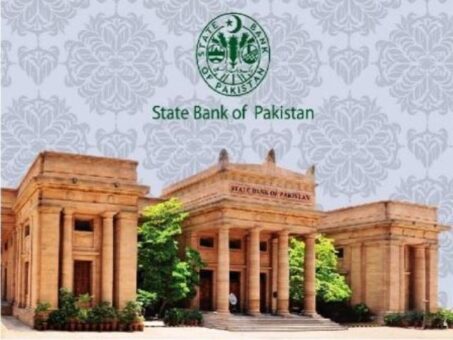Karachi, Pakistan – The State Bank of Pakistan (SBP) released the official exchange rates for December 13, 2021, providing customers with valuable insights into currency values based on the weighted average rates of commercial banks.
(more…)Tag: SBP
-

Prize Bonds (bearer) expire by this month
National prize bonds (bearer or unregistered) are expiring this month and the bills will become a useless piece of paper after December 31, 2021.
The government has set a deadline of December 31, 2021, to withdraw bearer bonds with denominations of Rs7,500, Rs15,000, Rs25,000, and Rs40,000.
READ MORE: History of Prize Bonds in Pakistan
The holders of these bonds have been asked to exchange or convert those bills before the cutoff date.
The State Bank of Pakistan (SBP) data showed that bearer bonds worth Rs28 billion were still in the possession of the investors by the end of October 2021.
However, the bondholders surrendered these bills worth Rs437.59 billion during the last one year. The stock of these bearer bonds is Rs465.59 billion by October 2020.
In June 2019, the government decided to discontinue high denomination bearer bonds in a phased manner. The government on June 24, 2019, announced to discontinue the circulation of Rs40,000 denomination national prize bonds. Similarly, on December 10, 2020, the government announced to discontinue the circulation of Rs25,000 denomination prize bonds. In April 2021, the finance ministry announced that national prize bonds of denominations Rs7,500 and Rs15,000 shall not be sold.
READ MORE: Income tax on prize bonds, lottery winning
The bonds can be converted to premium prize bonds (registered) of denomination of Rs25,000 and Rs40,000 (subject to the adjustment of differential amount) through 16 field offices of SBP Banking Services Corporation, and branches of six commercial banks i.e. National Bank of Pakistan, Habib Bank Limited, United Bank Limited, MCB Bank Limited, Allied Bank Limited, and Bank Alfalah Limited.
The bonds can be replaced with Special Saving Certificates/Defence Saving Certificates through the 16 field offices of SBP Banking Services Corporation, authorized commercial banks, and the National Savings Center.
READ MORE: Sale of Prize Bonds Rs7,500, Rs15,000 stopped forthwith
The bonds will only be encashed by transferring the proceeds to the bonds holder’s bank account through the 16 field offices of SBP Banking Services Corporation as well as the authorized commercial bank branches and to the Saving Accounts at National Savings Centers.
Following the announcement to discontinue the bearer bonds the investments in premium prize bonds recorded a phenomenal surge.
The investment in premium prize bonds increased to Rs54.5 billion by the end of October 2021 as compared with Rs20.54 billion in the same month of the last year, showing an increase of 169 per cent.
-

SBP simplifies requirements for microfinance borrowers
KARACHI: The State Bank of Pakistan (SBP) has simplified documentary requirements from microfinance borrowers, according to a statement issued on Saturday.
(more…) -

State Bank governor appointed as IFSB Chairman
KARACHI: The governor of State Bank of Pakistan (SBP), Dr. Reza Baqir has been appointed as chairman of the Council of Islamic Financial Services Board (IFSB), Malaysia for the year 2022.
(more…) -

SBP issues KIBOR rates on December 10, 2021
KARACHI: State Bank of Pakistan (SBP) on Friday issued the Karachi Interbank Offered Rates (KIBOR) as of December 10, 2021.
Following are the latest KIBOR rates:
Tenor BID OFFER 1 – Week 9.06 9.56 2 – Week 9.21 9.71 1 – Month 9.63 10.13 3 – Month 10.57 10.82 6 – Month 11.27 11.52 9 – Month 11.37 11.87 1 – Year 11.43 11.93 -

Customers’ exchange rates on December 10, 2021
Karachi, Pakistan – The State Bank of Pakistan (SBP) has published the exchange rates for December 10, 2021, providing customers with valuable information based on the weighted average rates of commercial banks.
(more…) -

SBP’s forex reserves increase to $18.658 billion
KARACHI: The foreign exchange reserves of the State Bank of Pakistan (SBP) have increased to $18.658 billion after a deposit of $3 billion from Saudi Fund for Development (SFD).
READ MORE: Pakistan’s import cover reduces to two months
The SBP on Thursday said during the week ended December 03, 2021a deposit of US$ 3,000.0 million was received from Saudi Fund for Development. After accounting for external debt and other official payments, SBP reserves increased by $2.648 billion to $18.658 billion, the SBP added.
The total foreign exchange reserves of the country have increased by $2.652 billion to $25.151 billion by week ended December 03, 2021. The foreign exchange reserves were at $22.499 billion by week ended November 26, 2021.
The foreign exchange reserves held by commercial banks registered a nominal increase by $4 million to $6.493 billion when compared with $6.489 billion a week ago.
-

SBP issues KIBOR rates on December 09, 2021
KARACHI: State Bank of Pakistan (SBP) on Thursday issued the Karachi Interbank Offered Rates (KIBOR) as of December 09, 2021.
Following are the latest KIBOR rates:
Tenor BID OFFER 1 – Week 8.97 9.47 2 – Week 9.09 9.59 1 – Month 9.56 10.06 3 – Month 10.58 10.83 6 – Month 11.28 11.53 9 – Month 11.39 11.89 1 – Year 11.44 11.94 -

SBP governor highlights cybersecurity issues at IFSB
KARACHI: The governor of State Bank of Pakistan (SBP), Dr. Reza Baqir has highlighted issues related to cybersecurity faced by banking system at the Islamic Financial Services Board (IFSB), Malaysia organised the 13th Public Lecture Series on the theme of ‘Sustainability and Cyber Resilience’ on December 8, 2021 in Abu Dhabi, United Arab Emirates.
(more…)
